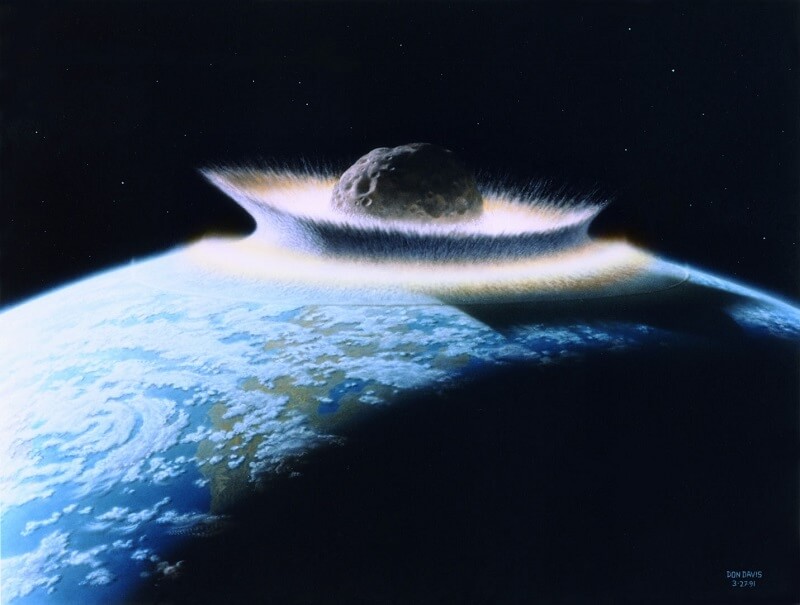Activity 1: Can You Find It?
Zoom in to find the following in the artwork:
- Planetoid
- Earth
- Land
- Oceans
- Clouds
- Stars
- Impact
Activity 2: Narrate the Artwork
- After studying the artwork, narrate the scene shown aloud using your own words.
Activity 3: Color the Artwork

- Click the crayon above and complete page 53 of 'Third Grade Art History Coloring Book.'

